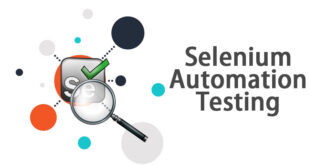Before you can land the remote job you’ve been dreaming of, you need to pass a remote job interview. And yes, there are some differences between a remote job interview and a traditional office job interview. Knowing what these differences are is what separates a successful interview from a failed one.

1 Select an Remote interview location
- Interruption free. You don’t want your kids or your dog running into the room and ruining your interview.
- quiet Whether you’re interviewing at a cafe or a co-worker’s place, you want to make sure there’s no background noise.
- Comfortable. You’ll feel more confident during interviews if you’re in a relaxed environment.
- Have a simple background. The webcam is usually used for remote interviews, so make sure your surroundings isn’t too distracting. If you have trouble locating such a place, you can utilise a virtual backdrop.
2 Make sure your Technology works as Intended
- Verify the functionality of your webcam, headphones, and microphone.
- Ensure a smooth operation of your PC. Make sure the interview software is the only app open when doing the interview if your device is older.
- Verify the functionality of your internet connection by testing it. The last thing you need is for your interview calls to constantly getting dropped.
- Test all of your equipment before the interview. Call a friend 30 minutes before the interview to confirm that you can easily communicate online.
- Shut down any unused software or tabs. You might need to occasionally let the interviewer see what’s on your screen. Nothing that you don’t want the interviewer to see should be running in the background.
3 Dressing up to Impress
- Even though the interview will be conducted remotely, you should still dress appropriately. Even though your coworkers won’t see you every day (unless the company has a mandated webcam policy), you should still dress nicely for the interviewer.
- Remember to conduct yourself normally throughout your remote job interview. Even though a suit and tie are not required, you should at the very least put on a formal enough shirt to give you a presentable appearance.
4 Be prepared for remote interview technical round
- Even if you’ve complied with our second recommendation and verified that all of your technology is flawless, you can never really be held accountable for potential technical problems.
- For instance, unexpected power outages or network congestion could cause your Internet connection to significantly slow down.
- Make sure you have a backup strategy in place in case something similar occurs.
- For instance, you can fall back on your phone’s data plan if your internet connection starts to lag.
- Alternatively, if there is no electricity, you could visit a nearby quiet cafe.
5 Showing up on time
- You don’t have to rush to your laptop at the last minute to do an online interview.
- 30 minutes before to the interview, sit down at your desk and make sure all of your technology is operational. Examine your microphone, webcam, etc.
- Go into the conference room and wait for the interviewer to join the call 10 minutes prior to the interview.
6 Pay attention to how you’re acting.
- Observe your body language like you would during a real interview:
- Make sure to look the interviewer in the eye.
- To highlight your points, make hand gestures.
- Ask inquiries if something is unclear while paying close attention to the interviewer.
- Don’t lose focus on your posture; pay attention to it.
- Mind your hands Do not mess around or play with your pen.
7 Ask the Right Questions
- The interviewer will ask you if you have any final questions about the position you are applying for before concluding.
- This is your chance to demonstrate to the interviewer that you are enthusiastic about the position and interested in what it entails to work for a remote company.

